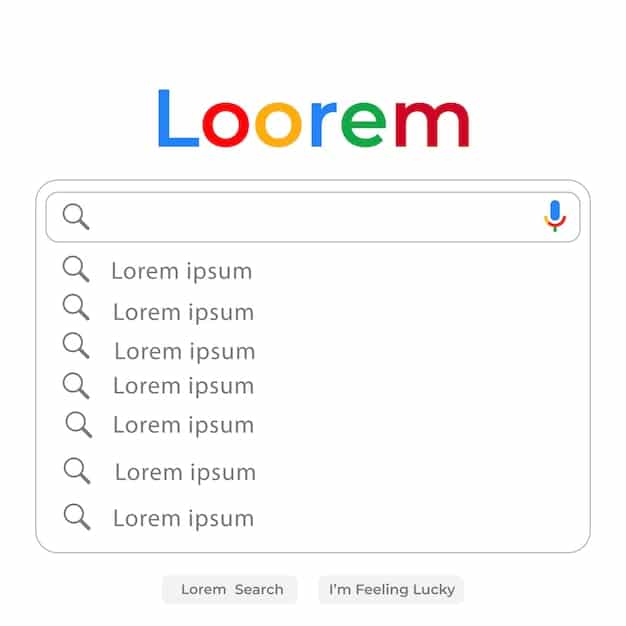E-commerce PPC: Slash Ad Spend by 10% with Smart Bidding

E-commerce PPC (Pay-Per-Click) can significantly benefit from smart bidding strategies that optimize ad spend, potentially lowering it by up to 10% through efficient campaign management and targeting.
E-commerce businesses often struggle with the high costs of PPC advertising. But what if you could significantly reduce your ad spend without sacrificing results? This article explores how smart bidding strategies can help you lower your E-commerce PPC: How to Lower Your Ad Spend by 10% with Smart Bidding, leading to a more profitable online business.
Understanding the E-commerce PPC Landscape
The e-commerce PPC landscape is a dynamic and competitive environment. To effectively navigate this landscape, understanding its key components and the challenges it presents is crucial for reducing ad spend and maximizing return on investment.
Key Components of E-commerce PPC
E-commerce PPC involves several key components, each playing a vital role in the overall success of your advertising campaigns.
- Keyword Research: Identifying relevant keywords is fundamental. Analyze search terms your target audience uses to find products like yours.
- Ad Creation: Crafting compelling ad copy that resonates with potential customers and adheres to platform guidelines is essential.
- Landing Page Optimization: Ensuring your landing pages are relevant, user-friendly, and optimized for conversions is crucial.
- Bid Management: Strategically managing your bids to achieve optimal ad placement within your budget is a continuous process.
Challenges in Reducing Ad Spend
Reducing ad spend while maintaining or improving performance presents several challenges in the e-commerce PPC landscape.
- Competition: High competition can drive up costs, making it difficult to achieve a lower ad spend.
- Changing Algorithms: Search engine algorithms change frequently, requiring constant monitoring and adjustments.
- Data Overload: Managing and interpreting vast amounts of data can be overwhelming, hindering effective decision-making.
- Seasonality: Seasonal fluctuations in demand impact keyword performance, requiring proactive campaign adjustments.
Successfully reducing e-commerce PPC ad spend requires a comprehensive understanding of the landscape, continuous monitoring, and a willingness to adapt to changing conditions. This knowledge is essential for implementing smart bidding strategies.

Leveraging Smart Bidding Strategies
Smart bidding strategies, driven by machine learning, offer e-commerce businesses the opportunity to optimize their PPC campaigns for improved performance and reduced ad spend. These strategies automate the bidding process, factoring in real-time data and predictive analysis to achieve your desired goals.
Types of Smart Bidding
Several smart bidding strategies are available within platforms like Google Ads. Understanding these can help you choose which aligns with your business goals.
- Target CPA (Cost Per Acquisition): Aims to achieve a specific cost per conversion.
- Target ROAS (Return on Ad Spend): Focuses on achieving a desired return for every dollar spent on advertising.
- Maximize Conversions: Automates bids to get the most conversions within your budget.
- Maximize Conversion Value: Similar to Maximize Conversions, but prioritizes conversions with higher value.
Benefits of Smart Bidding for E-commerce
Implementing smart bidding strategies brings numerous benefits to e-commerce businesses looking to optimize PPC campaigns.
- Improved Efficiency: Automating bid adjustments frees up time and resources for other marketing activities.
- Enhanced Targeting: Machine learning algorithms refine targeting based on data, delivering ads to the most receptive audience.
- Real-Time Optimization: Bids are adjusted in real-time based on factors like device, location, and time of day.
- Data-Driven Decisions: Smart bidding leverages vast amounts of data to inform bidding decisions, leading to better outcomes.
By strategically implementing smart bidding, e-commerce businesses can tap into the power of automation and data-driven insights to optimize their campaigns, boost ROI, and reduce their overall ad spend.
Optimizing Keywords for Cost Efficiency
Keyword optimization is an integral component of e-commerce PPC management. Focusing on relevant and cost-effective keywords can directly reduce ad spend while attracting qualified traffic that converts.
Refining Keyword Lists
Evaluate your keyword lists to determine which terms are delivering the most value and which are underperforming.
- Identify High-Performing Keywords: Focus on keywords with low cost per conversion and high conversion rates.
- Pause Low-Performing Keywords: Eliminate keywords with low click-through rates and high cost per click.
- Review Search Terms: Analyze search terms triggering your ads to identify new, relevant keywords and negative keywords.
Leveraging Negative Keywords
Negative keywords prevent irrelevant searches from triggering your ads, ensuring your budget is allocated efficiently. This is a crucial step in reducing wasted ad spend.
- Identify Irrelevant Terms: Determine search terms that are unrelated to your products or services.
- Add Negative Keywords: Add these irrelevant terms to your negative keyword lists at the campaign or account level.
- Regularly Monitor: Continuously review search term reports to stay ahead of new and evolving irrelevant terms.

By consistently refining your keyword lists and strategically using negative keywords, you can target the most qualified customers and optimize e-commerce PPC campaigns. This improved targeting contributes to lower ad expenditure and delivers a better return on investment.
Improving Ad Quality and Relevance
A high-quality ad is one that is both relevant and engaging to your target audience. By focusing on ad quality and relevance, you can improve your ad rank, lower costs, and increase your chances of driving conversions.
Crafting Compelling Ad Copy
Compelling ad copy is crucial for getting potential customers to click on your ads. Your ad copy should be clear, concise, and relevant to the search terms being used.
- Highlight Key Benefits: Focus on the benefits your products or services offer to solve your customers’ problems.
- Use Strong Call-to-Actions: Include phrases that tell users what you want them to do, such as “Shop Now,” “Learn More,” or “Get a Free Quote.”
- Include Keywords: Ensure your ad copy contains relevant keywords to improve ad relevance.
Optimizing Landing Pages
Your landing page experience is a critical element of ad quality. Make sure your landing pages provide a seamless user experience, relevant content, and clear paths to conversion.
- Ensure Relevance: Ensure your landing page content is directly relevant to the ad copy and search query.
- Improve Page Speed: Optimize your landing page for fast loading times to reduce bounce rates.
- Mobile Optimization: Ensure your landing page is optimized for mobile devices to cater to mobile users.
Improving ad quality and relevance can significantly impact the performance of e-commerce PPC campaigns. By crafting compelling ad copy and optimizing landing pages, you can increase click-through rates, lower costs, and improve overall ROI.
Refining Targeting Options
Refining your targeting options ensures that your ads are being shown to the most relevant audience, reducing wasted ad spend. By strategically adjusting your demographic and audience targeting, you can make your ads more efficient and cost-effective.
Demographic Targeting
Consider utilizing demographic targeting to ensure your ads are reaching the most promising segments of the population.
- Age: Adjust your targeting to focus on specific age groups that are most likely to purchase your products or services.
- Gender: If your products or services are specific to one gender, adjust your targeting accordingly.
- Income: Target areas with higher average incomes as it might be directly proportional to the average order value.
Audience Targeting
Leverage audience targeting to reach users based on their interests, behaviors, and online activity.
- Interest-Based Audiences: Target users who have shown interest in specific topics, hobbies, or products.
- Remarketing: Create remarketing lists to re-engage users who have previously interacted with your website.
- Custom Audiences: Upload customer data to create custom audiences based on your existing customer base.
Strategically refining your targeting options can significantly reduce wasted ad spend and improve campaign performance. By focusing on the most relevant demographics and audiences, you can optimize e-commerce PPC efforts and get a higher return on investment.
Continuous Monitoring and A/B Testing
Continuous monitoring and A/B testing are essential for optimizing e-commerce PPC campaigns and achieving ongoing improvements in performance. By regularly monitoring key metrics and experimenting with different ad variations, you can identify what works best and continuously refine your strategy.
Monitoring Key Metrics
Regularly monitoring key performance indicators (KPIs) provides valuable insights into campaign performance and helps identify areas for improvement.
- Click-Through Rate (CTR): Monitor CTR to gauge ad relevance and determine which ad variations are most engaging.
- Conversion Rate: Track conversion rates to understand how well your ads are driving desired actions on your website.
- Cost Per Acquisition (CPA): Monitor CPA to understand the cost effectiveness of acquiring new customers via ads.
A/B Testing Ad Variations
A/B testing involves creating multiple ad variations and testing them simultaneously to determine which performs best.
- Test Ad Headlines: Experiment with different headlines to see which attracts the most clicks.
- Test Ad Descriptions: Test different ad descriptions to see which drives the most conversions.
- Test Landing Pages: Try out various landing pages to see which provides the best user experience and boosts conversion rates.
By continuously monitoring performance and actively A/B testing ad variations, e-commerce businesses can optimize their PPC campaigns, boost ROI, and ensure sustained growth. This ongoing optimization ensures that your ad spend is effective and delivers the best possible results.
| Key Point | Brief Description |
|---|---|
| 🎯 Smart Bidding | Automates bids using machine learning for better ROI. |
| 🚫 Negative Keywords | Prevents wasted spend on irrelevant search terms. |
| ✍️ Ad Quality | Crafting compelling, relevant ad copy. |
| 📊 A/B Testing | Experimenting with ad variations for continuous improvement. |
FAQ
Smart bidding automates ad bidding using machine learning to optimize for conversions or conversion value in real-time, enhancing ROI.
Negative keywords prevent your ads from showing for irrelevant searches, conserving your budget and improving targeting efficiency.
High ad quality leads to better ad placements and lower costs, because of improved relevance and engagement with potential customers.
Critical metrics include click-through rate (CTR), conversion rate, and cost per acquisition (CPA) to monitor campaign effectiveness.
A/B testing should be an ongoing process, regularly experimenting with ad variations to optimize and refine your strategy continually.
Conclusion
Reducing ad spend in e-commerce PPC requires a strategic and adaptive approach. By leveraging smart bidding, optimizing keywords, improving ad quality, refining your targeting, and continuously monitoring and testing your campaigns, you can achieve significant cost savings and improve your overall ROI. Embracing these strategies can lead to a more profitable and successful e-commerce venture.





